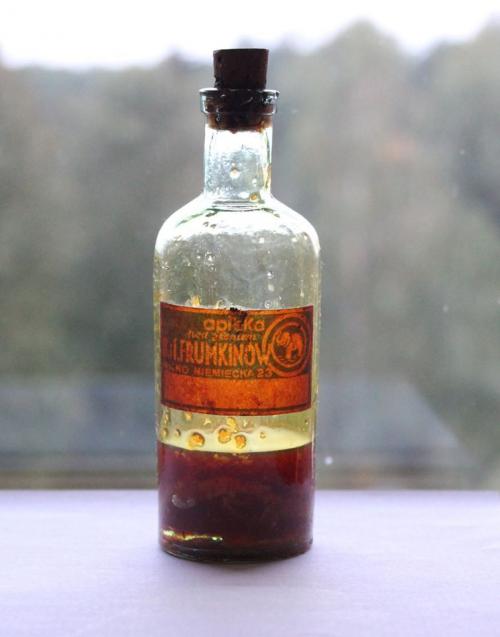An Object With a Story: a Small Brown Bottle From the Frumkin Family On a Vilnius Market

Neringa Latvytė from EHRI partner the Vilna Gaon State Jewish Museum (VGSJM) in Lithuania made a remarkable discovery when she visited the biggest market of Vilnius: a small brown glass bottle that had a bigger tale to tell. With her story she would like to encourage people to tell bigger stories by connecting objects, archives, sources and memories.
On September 11, 2014 while walking in the biggest market of Vilnius which is called Kalvarijų market, in the window of the Soviet style kiosk I noticed an old tiny brown glass bottle. On the label of the bottle a few words were written: Apteka Pod Sloniem, B. i I. Frumkinow Wilno Niemiecka 23. The Frumkins name made me think that the family might be Jewish, but I wasn’t sure about it. The word “Wilno” was the most important criterium for me to buy the bottle because I, being an historian, know that nowadays not so often you can find Jewish personal items which survived WWII. The items from the once Polish provincial town Wilno are in special demand among collectors. I bought the bottle but at that time I didn‘t know that for four Euros, I was buying a whole family history.
The Frumkins
Archival documents provided me with information about the Frumkins. In the Register of the Lithuanian population compiled by the Lithuanian Statistics Board in May 1942, from the Lithuanian Central State Archives (fond R-643, subfond 5, file 151, pages 16–22) I found that Isak Frumkin was born in 1886 and his wife Berta Frumkin in 1883. They, together with 362 other Vilnius’ Jews, lived in Ligoninės street in the so called long building. The name of the street tells us that the street was in the territory of the Big Ghetto which was established on September 6, 1941, in Vilnius. About 30,000 Jews were imprisoned there and about 10 000 were in the Small Ghetto, which was liquidated in the end of October 1941. The Big Ghetto existed until 23 September 1943
Pharmacists
To have a profession in the ghetto was extremely important. A labour certificate (Ausweis) guaranteed a safer life not only for the card’s holder but also for three more family members. A column in the Statistics Board’s Register gives information about people’s occupations. That’s how I found out that Isak and Berta Frumkin were pharmacists, which means that they were specialists and were given labour certificates. This most likely saved them from the first selections and deportations of the ghetto prisoners to the mass killing site in Paneriai. I couldn’t find information about Berta’s fate after May 1942. In the register compiled by the survivors from the Vilnius ghetto, there is no mention of Berta Frumkin. It is likely that she was sent to the Paneriai mass killing site and shot after the liquidation of the Vilnius ghetto.
Holocaust Survivors and Victims Database
Information about Isak Frumkin’s fate I was able to find in the United States Holocaust Memorial’s Holocaust Survivors' and Victims' Database. In this database I discovered that Isak Frumkin had an occupation which was related to medicine and that during the war he was in the Vilna ghetto. Between 1943 – 1944 he was in the Nazi forced labour camp in Klooga (Estonia) where he died.
Photo and article by Neringa Latvytė
